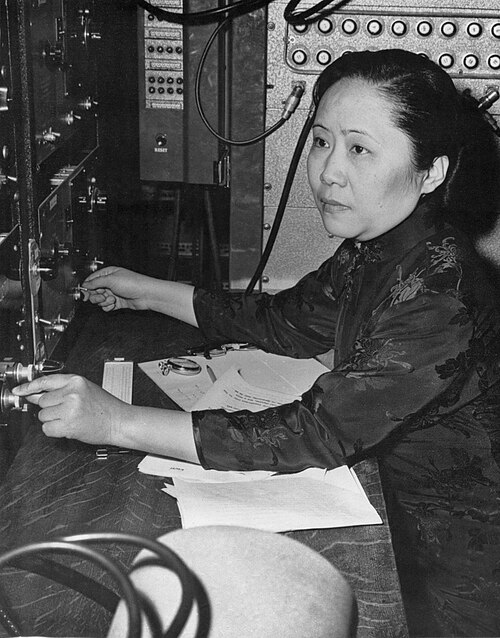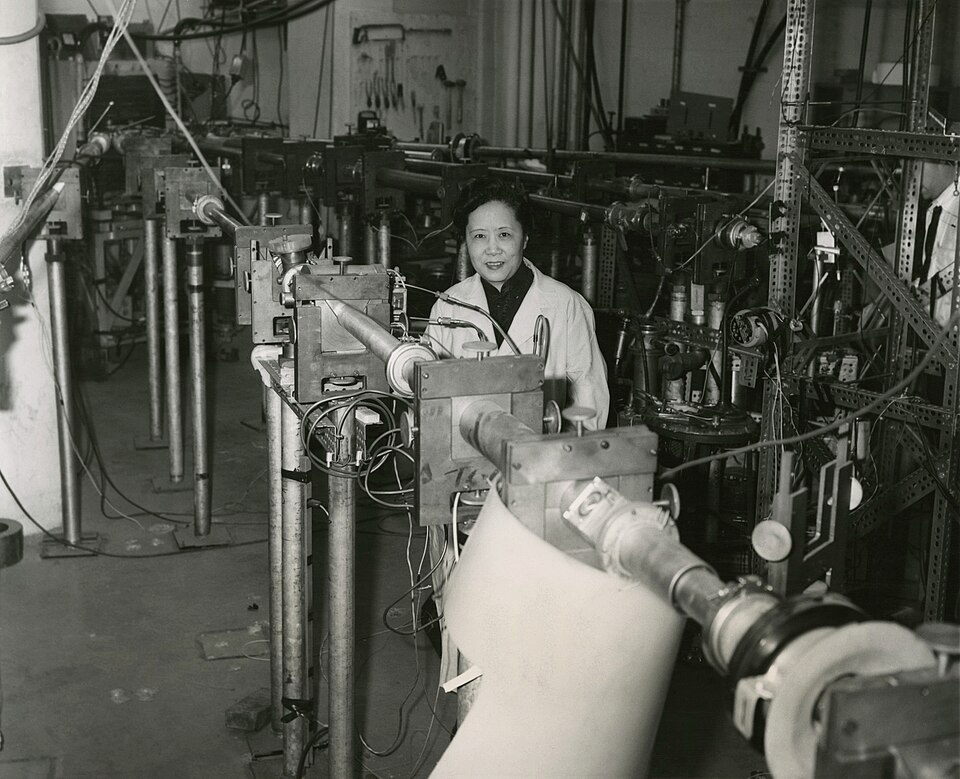
Physicist Chien-Shiung Wu has been nicknamed the “First Lady of Physics” and the “Queen of Nuclear Research” for her contributions to the fields of nuclear and particle physics. She also taught at Princeton University and Columbia University. In celebration of her birthday, let’s explore her life, research, and legacy.
Lifelong Learner
Wu was born in a small town called Liuhe outside Shanghai, China, on May 31, 1912. Her parents, Zhong-Yi and Fanhua Fan, valued education and nurtured her interest in learning starting at a young age. Her mother was a teacher, and her father was an engineer who established one of the first schools in China to admit girls. Wu explored a range of academic interests, from Chinese poetry to Western literature on democracy to listening to her father read from scientific journals.
At age 11, Wu left home to attend a boarding school, where her passion for science grew. She was ranked
At UC Berkeley, Wu studied under physicists such as Emilio Segré, Ernest Lawrence, and J. Robert Oppenheimer, where her research focused on uranium fission products. In 1940, she received her PhD, and two years later, married fellow graduate student Luke Chia-Liu Yuan. Despite receiving accolades at Berkeley, Wu struggled to find employment as Asian discrimination had increased with the start of World War II. After a couple of years, she began lecturing at Princeton University as the first female faculty member hired by the physics department.
Early Discoveries
In 1944, Wu joined the Manhattan Project at Columbia University and made some of her first discoveries. Several of her colleagues recalled the work she had done on uranium fission products and turned to her for help solving a problem with the first nuclear reactor ever built. The reactor kept starting up and shutting down, and Italian physicist Enrico Fermi surmised that a fission product, Xe-135, might be the issue. The answer to the malfunctioning reactor was found in Wu’s paper, where she had verified that Xe-135 had an unexpectedly large neutron absorption cross section.
When the war ended in 1945, Wu was hired as an associate research professor at Columbia, where she remained for the rest of her career. In 1952, she became the first woman to hold the title of a tenured physics professor in the university’s history.

Chien-Shiung Wu pictured in the laboratory at Columbia University, 1963. Licensed in the public domain via Wikimedia Commons.
Untangling Entanglement
Throughout her career at Columbia, Wu was considered the leading expert in the field of beta decay and weak interaction physics. She began experimenting with the Einstein-Podolsky-Rosen (EPR) paradox. This thought experiment, proposed by physicists Albert Einstein, Boris Podolsky, and Nathan Rosen, argues that the description of physical reality by quantum mechanics is incomplete. It involves preparing a pair of particles in what would later be known as an entangled state. Quantum entanglement is where the quantum state of each particle in a group cannot be described independently from the state of the others, even if separated by distance.
Wu conducted an experiment that was later realized to be the first confirmation of the phenomenon and validity of entanglement using photons through observing angular correlation. The experiment also confirmed the work of other physicists’ calculations on the correlation of the quantum polarizations of two photons that propagate in opposing directions. Her experiment was the first recognized confirmation of quantum results relevant to a pair of entangled photons, as applicable to the EPR paradox.

Chien-Shiung Wu pictured working on experiments at Columbia University, 1963. Original photograph property of the Smithsonian Institution Archives. Licensed in the public domain via Wikimedia Commons.
The Experiment that Changed the Physics World
Wu continued to research entanglement and beta decay. Her research confirmed Fermi’s theory of beta decay and demonstrated how it worked, showing how the majority of electrons exit a nucleus at high speeds during decay. Her work on the subject paved the way for both her later research and the modern physics field.
In 1956, two theoretical physicists, Tsung-Dao Lee and Chen Ning Yang, began questioning the “law of conservation of parity”, a hypothetical law of particle physics. Experimental results proved that parity was conserved for electromagnetic interactions and for the strong interaction, so scientists had predicted that it would also hold true for the weak interaction. However, Lee and Yang’s research found that that may not be true. The two men designed an experiment to test conservation of parity in the lab and chose Wu to carry it out.
She took a sample of cobalt-60 — a radioactive form of cobalt metal — and cooled it to cryogenic temperatures using liquid gases. Cobalt-60 decays by beta particle emission, tying in Wu’s expertise with beta decay. The cryogenic temperatures were used to reduce the amount of thermal vibration of the cobalt atoms to almost none. A constant magnetic field must be applied across the cobalt-60 to cause the spin axes of the atomic nuclei to line up in the same direction.
Lee and Yang predicted that the beta particles from the cobalt-60 would be emitted asymmetrically, which would disprove the “law of conservation of parity”. The results of Wu’s experiment demonstrated that their prediction was correct. Her colleagues at Columbia carried out further experiments that showed the same results, thus disproving the law of parity. This discovery played a major role in the development of the Standard Model, which is now scientists’ best way to describe the fundamental forces in the universe and classify all known elementary particles.

Schematic illustration of the Wu experiment disproving parity law, created in 2013. Licensed for use in the public domain via Wikimedia Commons.
Left Out of the Legacy
The discovery from Wu’s experiment made waves in the physics world. Some at Princeton called it the “most impactful [experiment] since the Michelson-Morley experiment”, which paved the way for Einstein’s theory of relativity. The American Association of University Women (AAUW) called it the solution to the biggest riddle in science. Lee and Yang were awarded the Nobel Prize for Physics in 1957 for this theoretical work. Wu was not included, despite it being traditional to award prizes to the experimentalists, not the theorists. Lee and Yang recognized Wu’s contributions in their speeches and unsuccessfully attempted to nominate her for a future prize.
Wu’s first public honor was not until more than two decades later when she was awarded the inaugural Wolf Prize in 1978. This came three years after she was the first female president of the American Physical Society. While in that position, she met with President Gerald Ford, which led to the creation of the Office of Science and Technology Policy. She became highly regarded in the scientific community and received many honors throughout the 1980s, 1990s, and 2000s, including being retroactively named as Time magazine’s 1945 woman of the year in 2019.
Wu spent much of her later years advocating for women’s equality in scientific fields and promoting science education to students in China, Taiwan, and the U.S. until her death in 1997.
More on Physics
- There’s more to explore about Wu’s experiments and legacy:
- Check out these blog posts on other prominent physicists:
- Esther M. Conwell, a physicist whose research into semiconductors earned her an IEEE Edison Medal and National Medal of Science
- Niels Bohr, one of the most prominent physicists of the 20th century
- Max Planck, known as the originator of quantum theory




Comments (0)